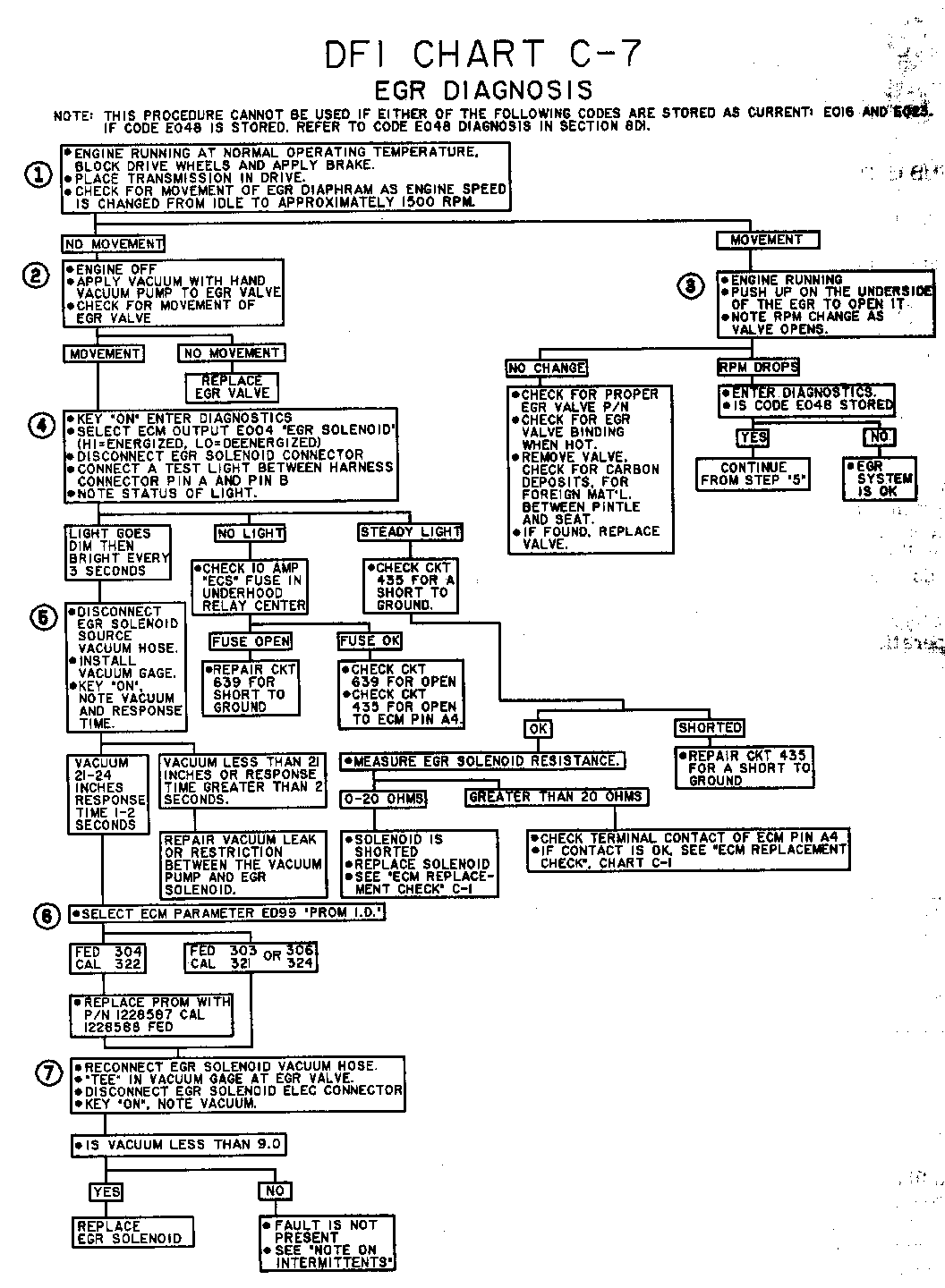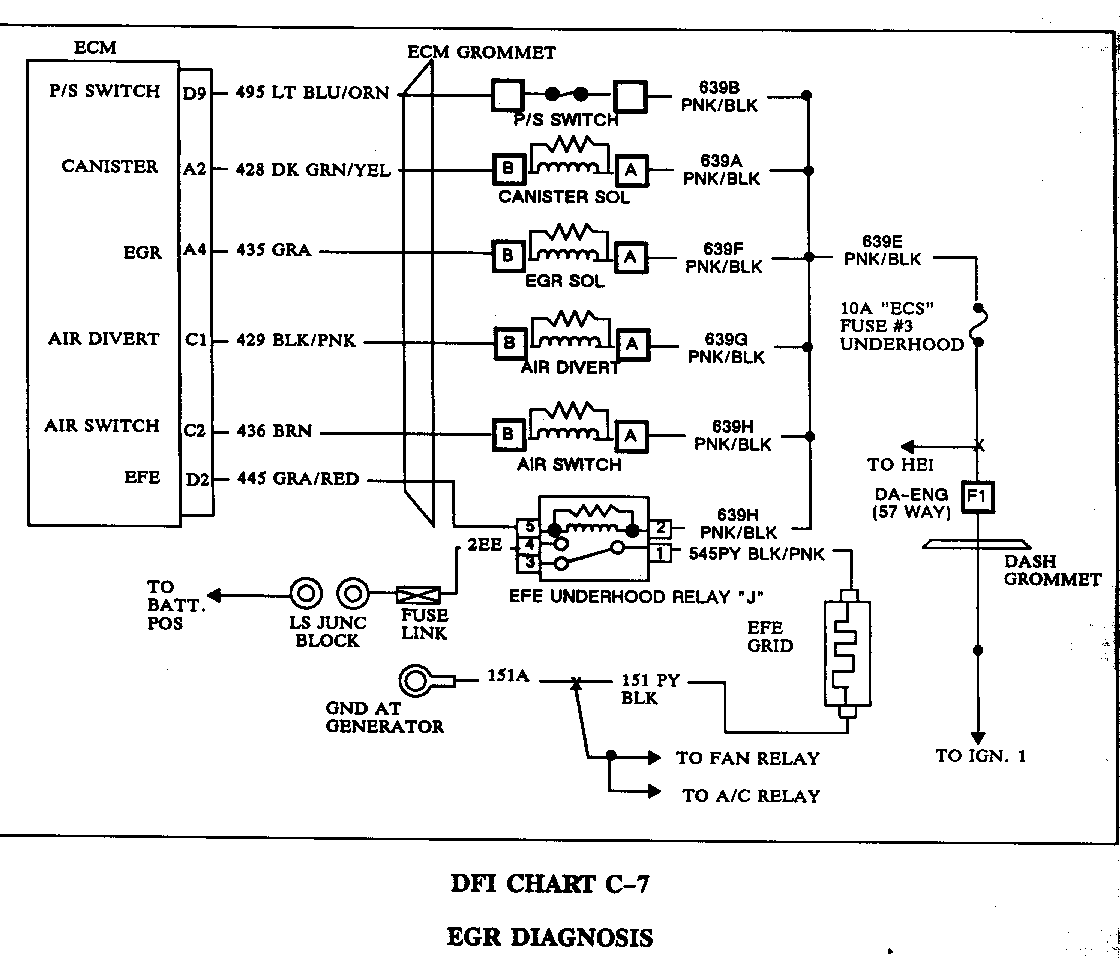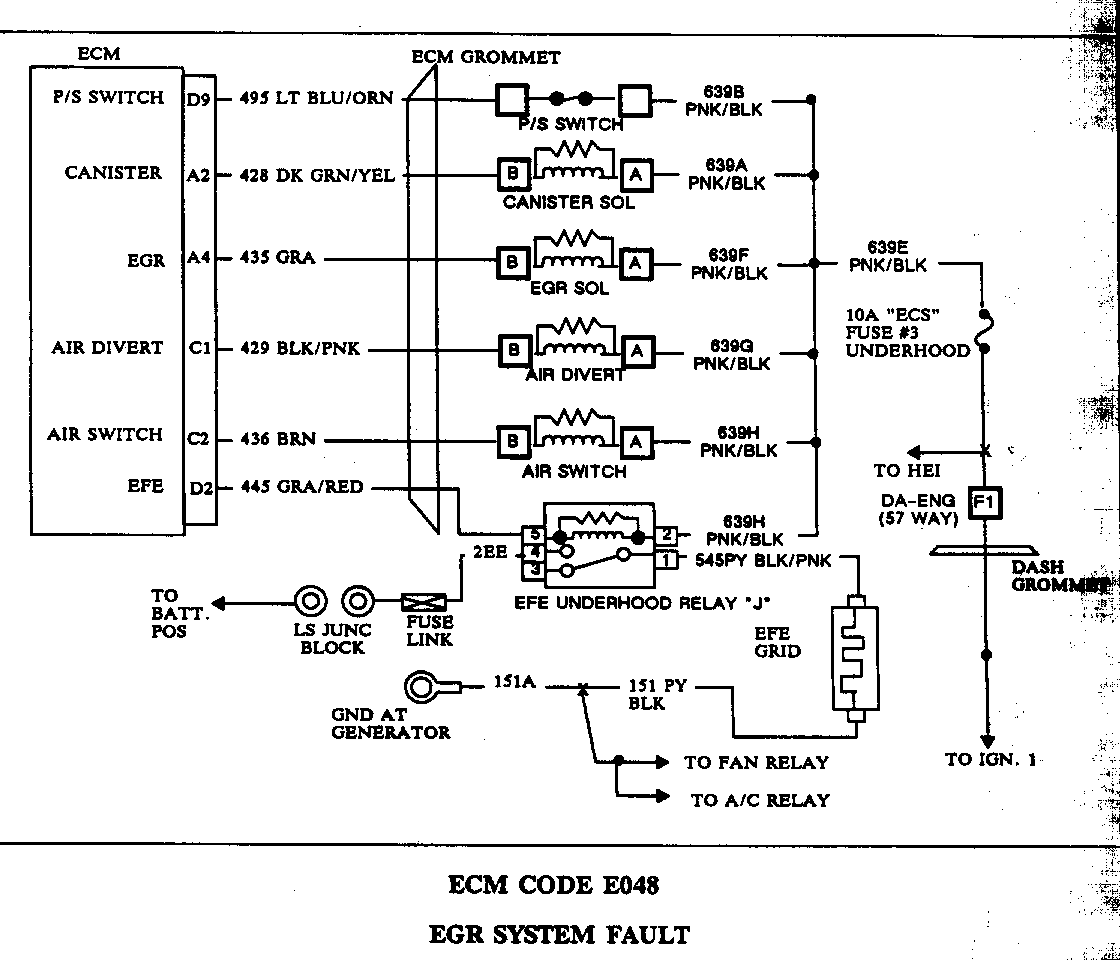INTERMITTENT CODE 48 (PROCEDURE FOR DIAGNOSIS)

MODELS AFFECTED: 1986 ELDORADOS AND SEVILLES
Some 1986 Eldorados and Sevilles may set an intermittent Code E048. This condition may be caused by an ECM PROM with calibration ID 304 which allows variable control of the EGR solenoid. With the 304 PROM, lower EGR vacuum levels may be encountered during Code E048 testing conditions (see Bulletin 86-52, DFI Code E048 Diagnosis). This may result in Code E048 setting with no trouble found.
A revised PROM with calibration ID 306 has been released to repair this condition. This PROM increases the EGR vacuum during Code E048 testing conditions to eliminate Code E048 from setting with no trouble found.
As a result of the PROM changes, the diagnostic procedures for ECM Code E048 and the EGR System in the 1986 Eldorado and Seville Final Edition Service Information Manual are incorrect. The following revised diagnostic procedures should be used for all 1986 Eldorados and Sevilles in place of the procedures listed on pages 6E-C7-6, 7 and 8DI-68, 71 of the 1986 Eldorado and Seville Final Edition Service Information Manual.
Before replacing the PROM, the following fault trees must be used to verify proper EGR system operation.
DFI CHART C-7 EGR DIAGNOSIS
NOTES ON FAULT TREE:
1. Checking for a vacuum signal to the EGR valve.
2. Checking for a leaking EGR valve, possibly caused by a tom diaphragm.
3. Checking for EGR valve's ability to flow exhaust gas to the intake. RPM should drop and idle should become rough or stall.
4. Checking the ECM's ability to wm the EGR solenoid on.
5. Checking vacuum system for good supply and no restriction.
6. Checking for proper ECM PROM calibration.
7. Checking the maximum vacuum that the EGR solenoid will pass.
ECM CODE E048 EGR SYSTEM FAULT
NOTES ON FAULT TREE: This fault tree can be used for Intermittents
1. Many other codes will disable both the EGR system and the test for Code E048. Diagnose all other current ECM trouble codes before performing the Code E048 Chart.
2. The EGR system is supplied with vacuum from the vacuum pump. Check for pump operation at key on.
3. During E099 output cycling, the EGR valve should rise and fall; the vacuum pump operates and the EGR solenoid cycles on and off.
4. Disconnecting the EGR solenoid will allow full vacuum to pass to the EGR valve. This should cause idle RPM to drop or stall.
5. Checking vacuum system for good supply and no restriction.
6. Checking for proper ECM PROM calibration.
7. Checking the maximum vacuum that the EGR solenoid will pass.




General Motors bulletins are intended for use by professional technicians, not a "do-it-yourselfer". They are written to inform those technicians of conditions that may occur on some vehicles, or to provide information that could assist in the proper service of a vehicle. Properly trained technicians have the equipment, tools, safety instructions and know-how to do a job properly and safely. If a condition is described, do not assume that the bulletin applies to your vehicle, or that your vehicle will have that condition. See a General Motors dealer servicing your brand of General Motors vehicle for information on whether your vehicle may benefit from the information.
